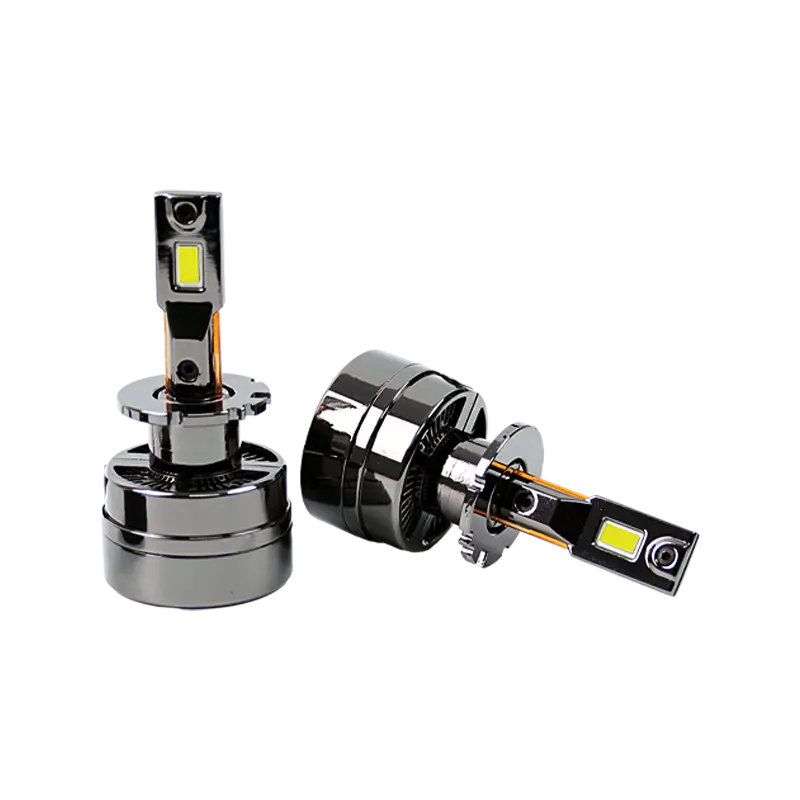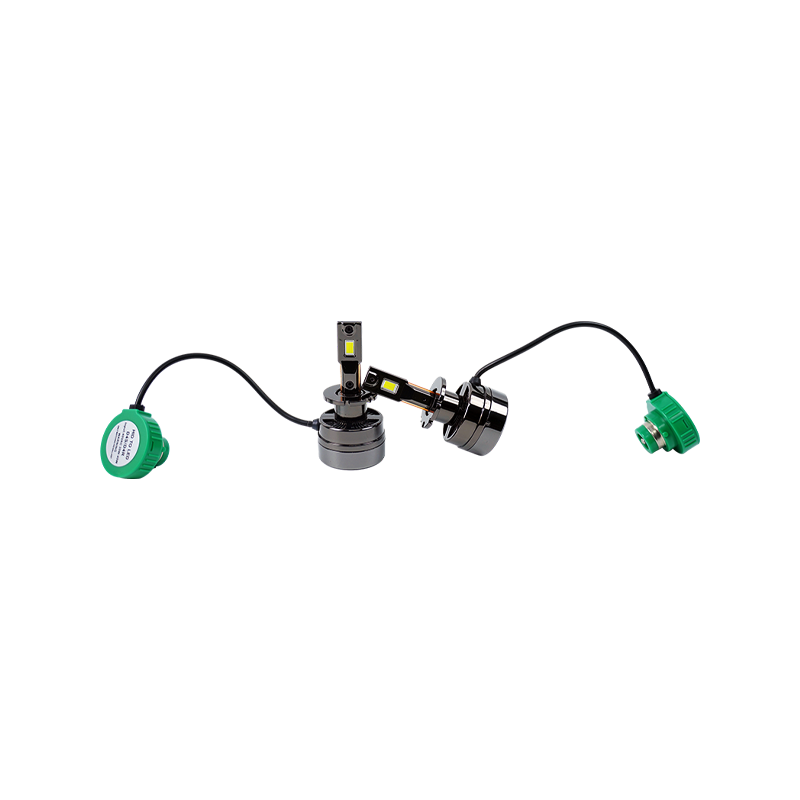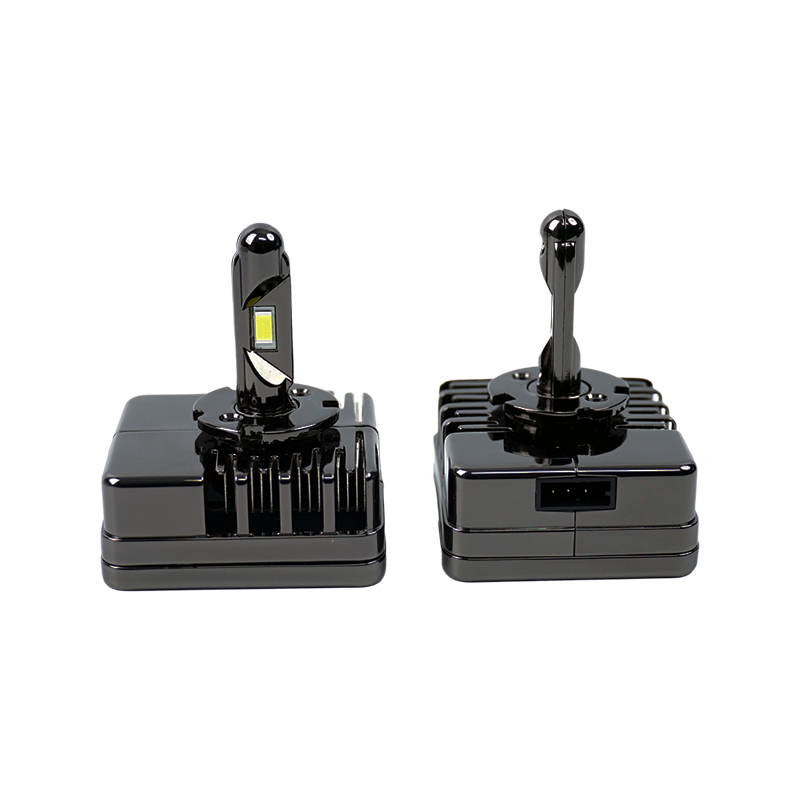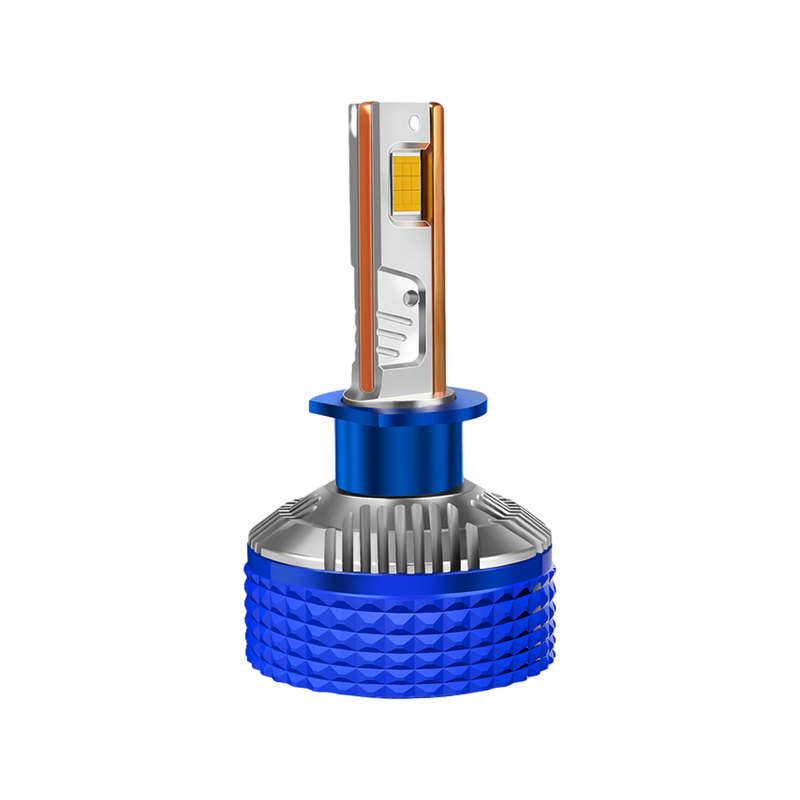The automotive lighting market has experienced significant advancements in recent years, with LED technology emerging as a leading choice for drivers seeking reliability, energy efficiency, and durability. Among these advancements, the IP68 Waterproof LED Headlight Bulb has become increasingly popular due to its resistance to water, dust, and other environmental factors. However, as the adoption of these bulbs grows, one common question arises: are there any compatibility issues when installing an IP68 Waterproof LED Headlight Bulb in different car models?
Understanding the IP68 Waterproof LED Headlight Bulb
Before delving into compatibility issues, it is essential to understand the characteristics of an IP68 Waterproof LED Headlight Bulb. The term IP68 refers to a specific standard of protection against dust and water ingress. A rating of IP68 ensures that the bulb is fully protected from dust and can withstand submersion in water for extended periods. This level of protection makes the IP68 Waterproof LED Headlight Bulb particularly suitable for vehicles frequently exposed to wet or harsh environments.
In addition to its waterproofing, the IP68 Waterproof LED Headlight Bulb features LED technology, which provides several benefits compared to traditional halogen or HID bulbs. These benefits include longer lifespan, reduced power consumption, higher luminous efficiency, and more consistent lighting output. Despite these advantages, ensuring that an IP68 Waterproof LED Headlight Bulb is compatible with a specific vehicle model requires careful consideration of multiple factors.
Vehicle Headlight Designs and Their Impact on Compatibility
Variations in Headlight Housing
One of the primary factors affecting the compatibility of an IP68 Waterproof LED Headlight Bulb is the design of the vehicle’s headlight housing. Different car models have varying headlight assemblies, including reflector-type, projector-type, and multi-lens designs. The physical shape and size of the bulb must match the housing to ensure proper installation.
A common issue arises when attempting to install an IP68 Waterproof LED Headlight Bulb into a housing designed for halogen bulbs. LED bulbs often have larger heat sinks or different connector designs, which may interfere with the limited space inside the headlight assembly. Improper fitting can result in suboptimal beam patterns, glare, or reduced lighting efficiency.
Headlight Lens and Beam Pattern Considerations
Even if a bulb physically fits into the headlight housing, the lens design may affect the beam pattern. Halogen headlight assemblies are engineered to focus light differently than LEDs. Installing an IP68 Waterproof LED Headlight Bulb in a housing designed for halogen bulbs may lead to scattered or uneven light projection. This issue is particularly significant for projector-type headlights, where precise alignment is required for optimal performance.
Ensuring correct beam alignment is crucial, not only for visibility but also for road safety. Misaligned LED bulbs can blind oncoming drivers and reduce the effective lighting distance, undermining one of the primary benefits of upgrading to an IP68 Waterproof LED Headlight Bulb.
Electrical System Compatibility
Voltage and Current Requirements
Another critical consideration for compatibility involves the vehicle’s electrical system. IP68 Waterproof LED Headlight Bulbs generally operate within a specific voltage range, typically 12V to 24V for most vehicles. However, differences in electrical design among car models can impact performance. Some older vehicles or models with specialized electronics may experience flickering, error messages, or reduced brightness if the LED bulb is not compatible with the system.
CAN Bus and Error Detection Systems
Modern vehicles often feature CAN Bus systems to monitor electrical components. An IP68 Waterproof LED Headlight Bulb may trigger error warnings on vehicles equipped with CAN Bus technology if the system detects lower current draw from the LED compared to the original halogen bulb. To address this, drivers may need load resistors or CAN Bus-compatible LED drivers, ensuring proper integration without affecting vehicle electronics.
Heat Management and Its Impact on Vehicle Compatibility
LED bulbs generate heat differently from halogen or HID bulbs. An IP68 Waterproof LED Headlight Bulb incorporates a heat sink or cooling fan to maintain optimal operating temperature. However, the available space within the headlight assembly can limit heat dissipation. Cars with compact headlight housings may experience overheating issues if the LED bulb’s cooling system cannot function effectively. Overheating may lead to shortened bulb lifespan or even damage to the headlight assembly, emphasizing the importance of considering thermal management when evaluating compatibility.
Installation Challenges and Mechanical Fit
Socket Types and Connector Designs
Vehicle manufacturers utilize various bulb sockets and connectors, such as H1, H4, H7, 9005, 9006, and more. Ensuring that the IP68 Waterproof LED Headlight Bulb matches the socket type is a fundamental step in compatibility assessment. Adapters or custom fittings may be necessary for certain vehicles, but they must be installed correctly to maintain waterproof integrity and electrical reliability.
Physical Constraints
Even when the socket matches, the overall size of the LED bulb—including heat sink and fan components—may pose mechanical challenges. Drivers may encounter difficulties fitting the bulb into tight spaces or securing the assembly without causing stress to wires or housing. Careful measurement and consideration of spatial constraints are crucial to avoid installation errors that could compromise performance or damage the vehicle.
Environmental and Regulatory Considerations
Weather Resistance and Durability
The IP68 Waterproof LED Headlight Bulb is designed to withstand exposure to water, dust, and debris, making it suitable for various climates and driving conditions. However, not all vehicles have sealed headlight assemblies. Vehicles with compromised seals or older housings may not fully benefit from the bulb’s waterproofing, potentially leading to moisture ingress and reduced lifespan.
Legal and Regulatory Compliance
Some jurisdictions regulate headlight brightness and beam patterns. Installing an IP68 Waterproof LED Headlight Bulb in a housing not designed for LED technology could inadvertently cause the vehicle to exceed legal limits for light intensity or beam alignment. Ensuring regulatory compliance is an essential aspect of compatibility, particularly for drivers concerned about safety and legal adherence.
Common Compatibility Solutions
Using Compatible LED Drivers
To address electrical compatibility issues, especially in CAN Bus-equipped vehicles, using LED drivers compatible with the vehicle’s system is recommended. These drivers regulate voltage and current, preventing flickering and error warnings while ensuring optimal bulb performance.
Selecting Bulbs with Adjustable Beam Patterns
Some IP68 Waterproof LED Headlight Bulbs come with adjustable positioning mechanisms or rotatable bases. These features allow drivers to optimize the beam pattern for their specific headlight housing, ensuring effective lighting and compliance with road safety standards.
Professional Installation
For vehicles with complex headlight assemblies or tight space constraints, professional installation is often the best option. Experienced technicians can address mechanical fit issues, electrical integration, and beam alignment, reducing the risk of installation errors that could compromise performance or safety.
Compatibility Checklist
To simplify compatibility assessment, drivers can consider the following checklist before purchasing an IP68 Waterproof LED Headlight Bulb:
| Compatibility Factor | Considerations |
|---|---|
| Bulb Socket Type | Ensure the LED bulb matches the vehicle’s socket (H1, H4, H7, etc.) |
| Headlight Housing | Confirm physical space and lens type accommodate the bulb |
| Electrical System | Verify voltage, current, and CAN Bus compatibility |
| Heat Management | Check for sufficient space for heat sink or cooling fan |
| Waterproofing | Ensure headlight seals are intact to maintain IP68 protection |
| Beam Pattern | Assess adjustability for proper alignment and compliance |
Conclusion
The IP68 Waterproof LED Headlight Bulb represents a significant advancement in automotive lighting technology, offering benefits such as energy efficiency, durability, and reliable performance in adverse conditions. However, ensuring compatibility with different car models requires careful consideration of multiple factors, including headlight design, electrical systems, heat management, and mechanical fit. By understanding these variables and taking appropriate measures—such as using compatible LED drivers, selecting adjustable bulbs, or seeking professional installation—drivers can maximize the benefits of an IP68 Waterproof LED Headlight Bulb while avoiding potential issues.
Ultimately, compatibility is not solely determined by the bulb itself but also by the vehicle’s design, electrical architecture, and environmental conditions. With careful assessment and informed choices, drivers can successfully integrate IP68 Waterproof LED Headlight Bulbs into their vehicles, achieving improved lighting performance and enhanced road safety.

 English
English Español
Español عربى
عربى русский
русский












